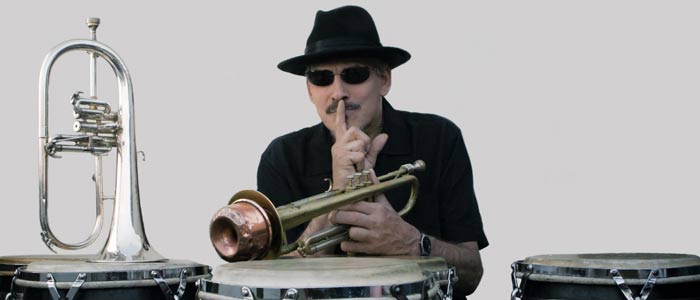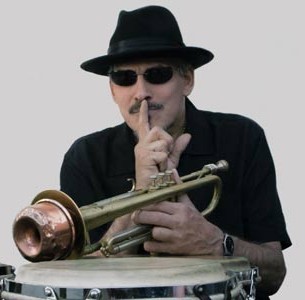
Feature photo by Andrea Zapata Girau
“After all the touring, and all the response, I thought to myself, what am I doing in the U.S.? Going through so much, just trying to get a gig and pay the rent. There, all of a sudden I had 40,000 dollars in my pocket! I thought to myself, I should stay here for a while, you know?”
Jerry Gonzalez, master Latin jazz conga and trumpet player, is conversing via phone from New York, explaining how he has now come to be based for twelve years in Madrid, Spain. In 2000, acclaimed Spanish director Fernando Trueba selected him as one of the thirteen renowned Latin jazz artists to be featured in his highly awarded documentary, Calle 54. Gonzalez first visited Madrid as part of activities related to the film, but he ended up staying, because as he puts it, “there was little more respect being given to me as a musicians and as a person and it felt good!”
Gonzalez’ musical career had already been in full swing for decades, taking off in 1970 as a member of Dizzy Gillespie‘s band. He played with Eddie Palmieri and many other legendary artists until coming on his own as a bandleader forming Jerry Gonzalez & the Fort Apache Band with his brother and bassist, considered one of the most exciting Latin jazz ensembles to emerge in the 90s.
Once in Spain, one of his projects quickly received worldwide attention when after jamming with many of Spain’s top flamenco artists, he teamed up with flamenco vocalist Josele and others to record “Piratas del Flamenco”. Unfortunately, that project did not continue to flourish as many of its participants, including gypsy vocalist Diego “El Cigala” achieved superstar status and focused on their solo careers. Gonzalez sighs, “Everybody kind of broke it up. Everybody wanted to go for themselves. Cigala got an ego, it kind of left me with a bad taste in my mouth”.
But Gonzalez didn’t let the Piratas’ discord affect him for too long at all. He had continued to jam with Latin musicians at Madrid’s jazz café, “Café Berlin”, and he formed “El Comando de la Clave” with three other Cuban artists”. As he describes, “I found them and I thought this is a group I could really play the drums with. The other cats didn’t know anything about the clave. These guys, I could play without anybody panicking!”
The band has been immensely successful, touring Europe extensively, which Gonzalez ascribes to the united force of their individual talents: “All of them are individual soloists, they are all virtuosos. Most of them were salsa players, not jazzers, but they had a lot of chops and techniques. I showed them how to play bop music and we are having a great time together.”
EL Comando de la Clave now continues to evolve along the lines of what Gonzalez calls “an idea he has had for a long time” – that of a “bebop rumba”, which he defines as a musically referring to his heroes: Afrocuban masters of the rumba, Muñequitos de Matanzas and Yoruba de Andabo, and the ultra-supreme saxophonist, John Coltrane.
When performing, Gonzalez says he often thinks of these musicians, his heroes, and he switches instruments when the mood strikes: “When I’m playing congas, and I wanna hear something I wanna hear, I wait for the chance to get up off my drums and play my trumpet and take it somewhere else.”
And as to whether he prefers the trumpet or the congas? Gonzalez laughs and exclaims, “I wish I had two more arms I would do both of them at the same time!”
Jerry Gonzalez and El Comando de la Clave in their first visit to the U.S. will play at Jazz Fest September 1 and the Mayne Stage on September 2.
Check Catalina’s radio show Beat Latino (On FB and itunes too!) as well as recent NPR features to explore the past, present and future of Latin music.
